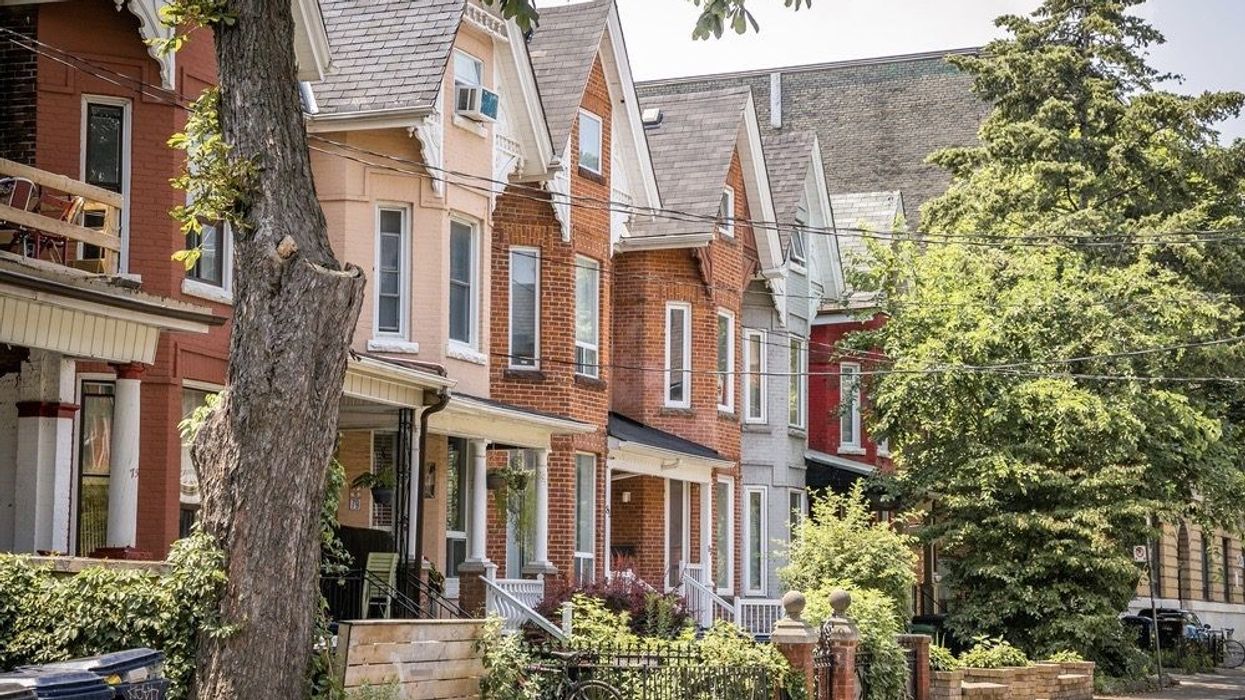Canada’s biggest housing markets have been experiencing a spring slowdown; national sales plunged 25.7% year over year in April, according to the Canadian Real Estate Association, and by 41% in the Greater Toronto Area, as rising interest rates and soaring inflation eat into budgets and prompt buyer fatigue.
That’s led to softening prices in many of the suburban markets around the City of Toronto, down roughly 6 - 12% in Peel, Durham, York and Halton Regions. However, given home prices ramped up so aggressively over the course of the pandemic, there’s still plenty of overvaluation to be found.
According to Moody’s Analytics’ Q4 2021 report, Canadian real estate remains overvalued by 23%, especially in the urban southern Ontario and eastern Canadian markets. Meanwhile, the latest CREA data shows aggregate home values, while slowing, still posted 7.4% gains last month.
For buyers looking to get into what is a rapidly transitioning market, this spells a growing risk of appraisal gaps: when one’s lender doesn’t agree with the value of the home and won’t finance the entirety of the home purchase, regardless of whether the buyer has a pre-approval. As a result, the buyer must then scramble to find the funds to fill that mortgage gap, especially if they’ve gone firm on a home purchase without a financing condition.
READ: Far Fewer Homes are Selling Over List as Toronto Market Cools
While appraisal gaps are typically associated with hot markets -- competitive bidding wars can easily convince buyers to commit more cash than planned -- they can also be prevalent in slowing markets, as lenders’ appraisal data quickly outpaces that of sellers’ sticky price expectations.
“This is yet another challenge on top of shrinking affordability as interest rates rise,” says Leah Zlatkin, mortgage expert at Lowestrates.ca. “Prospective homebuyers need to be aware of this before they stretch themselves too thin on offer night. There are options available, but when all of a buyer’s available cash is needed for a large down payment, this becomes a high-risk financial situation."
Mark Ostland, mortgage and housing expert from Meridian Credit Union, tells STOREYS that the most recent data reflects the market’s 180-degree pivot from the searing sellers’ conditions seen just months ago.
“Appraisal data is always moving, it’s very fluid. In the early days, when we saw these skyrocketing house prices, the appraisals couldn’t come in at those prices for a while because they didn’t have enough comparables to validate that yes, your house is worth this crazy price that it wasn’t worth six months ago,” he says. “But now we’re seeing it on the other side. We’re still seeing some higher priced appraisals, but the prices are coming in a little bit lower; so it will take some time, and time in today’s data world isn’t that long, it could just be a couple months, where we’ll now start to see home data reflect the current market versus the timing of the peak and once that starts coming down.”
A Pre-Approval Isn’t Bullet-Proof
According to Zlatkin, what trips up many prospective buyers is the expectation that their pre-approval guarantees the actual loan amount. In an example she lays out, a buyer agrees to purchase a home for $1M, requiring a 20% down payment; however, the bank appraises the property at just $900,000. As they’ll only loan 80% of the home’s loan to value, that buyer will receive $720,000 instead of $800,000, meaning they’re responsible for another $80,000 in cash. Short of negotiating the purchase price below the $1M mark, they have little choice but to make up that funds shortfall, either through a cash gift, or even turning to an alternative lender.
READ: What’s the Difference Between Being Pre-Approved and Pre-Qualified for a Mortgage?
Those purchasing homes under the $1M mark have a little more wiggle room, she adds, as buyers might be able to pull funds from their deposits if need be:
For a home bought at $950,000, a 20% down payment is $190,000. If the home is appraised at $900,000, the borrower must come up with a gap of $50,000. If they take it from their original down payment, they will now have $140,000, or about 15.5% down payment on their $900,000 home. However, they will now be required to have CMHC insurance, adding costs to their monthly mortgage payments and affecting their overall mortgage eligibility.
Calmer Times to Come
The good news, says Ostland, is that the market appears to have shifted enough that the initial appraisal shock is starting to dissipate. Overall, he’s seeing much healthier market conditions as less urgency allows all involved parties to take a breath.
READ: Is Now the Time to Buy?
“In the rush of the last year and a half, you had to go into a bid with no conditions whatsoever and just cross your fingers and hope you were the lucky one -- that has slowed down,” he says. In fact, some of the biggest signs I’m seeing are there are actually ‘for sale’ signs on people’s lawns now, rather than ‘sold’ signs, so that’s a big indication.
“Buyers really have to slow down and understand that what they couldn’t do before, they can now, and that we’re getting back to the pre-COVID bidding process. They can absolutely put in an appraisal, put in a home inspection, conditions of finance; there’s no silver bullet to getting around that, and from a buyer’s perspective, we now have the ability -- not 100%, because there are some markets that are very hot -- but we now have the ability to put that in. And sellers are saying, ‘Ok, I’m good with that, and I’ll take the time.’”





















